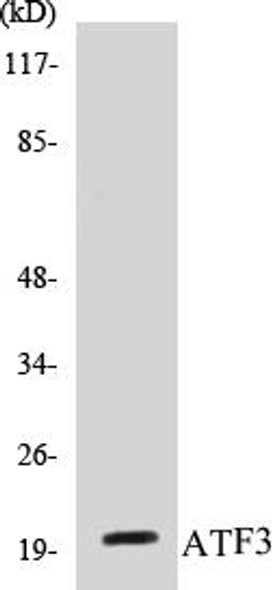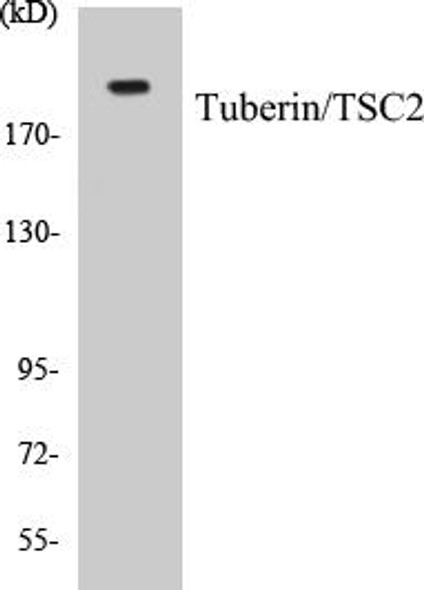Description
MDM4 Colorimetric Cell-Based ELISA Kit
The Human MDM4 Colorimetric Cell-based ELISA Kit is specifically designed for the precise measurement of MDM4 levels in cell lysates. This kit offers exceptional sensitivity and specificity, guaranteeing accurate and consistent results, making it suitable for a variety of research purposes.MDM4, also known as MDMX, is a key regulator of the p53 tumor suppressor pathway, playing a critical role in cell cycle regulation and apoptosis. Dysregulation of MDM4 has been implicated in various cancers, making it a valuable biomarker for studying cancer progression and developing targeted therapies.
With the Human MDM4 Colorimetric Cell-based ELISA Kit, researchers can confidently analyze MDM4 levels in cell samples, enabling deeper insights into the molecular mechanisms underlying cancer development and progression. Perfect for both basic research and drug discovery applications, this kit is a valuable tool for advancing our understanding of cancer biology.
| Product Name: | MDM4 Colorimetric Cell-Based ELISA |
| Product Code: | CBCAB00329 |
| ELISA Type: | Cell-Based |
| Target: | MDM4 |
| Reactivity: | Human, Mouse, Rat |
| Dynamic Range: | > 5000 Cells |
| Detection Method: | Colorimetric 450 nmStorage/Stability:4°C/6 Months |
| Format: | 96-Well Microplate |
The MDM4 Colorimetric Cell-Based ELISA Kit is a convenient, lysate-free, high throughput and sensitive assay kit that can detect MDM4 protein expression profile in cells. The kit can be used for measuring the relative amounts of MDM4 in cultured cells as well as screening for the effects that various treatments, inhibitors (ie siRNA or chemicals), or activators have on MDM4.
Qualitative determination of MDM4 concentration is achieved by an indirect ELISA format. In essence, MDM4 is captured by MDM4-specific primary antibodies while the HRP-conjugated secondary antibodies bind the Fc region of the primary antibody. Through this binding, the HRP enzyme conjugated to the secondary antibody can catalyze a colorimetric reaction upon substrate addition. Due to the qualitative nature of the Cell-Based ELISA, multiple normalization methods are needed:
| 1. | A monoclonal antibody specific for human GAPDH is included to serve as an internal positive control in normalizing the target absorbance values. |
| 2. | Following the colorimetric measurement of HRP activity via substrate addition, the Crystal Violet whole-cell staining method may be used to determine cell density. After staining, the results can be analysed by normalizing the absorbance values to cell amounts, by which the plating difference can be adjusted. |
| Database Information: | Gene ID: 4194, UniProt ID: O15151, OMIM: 602704, Unigene: Hs.497492 |
| Gene Symbol: | MDM4 |
| Sub Type: | None |
| UniProt Protein Function: | MDM4: Inhibits p53/TP53- and TP73/p73-mediated cell cycle arrest and apoptosis by binding its transcriptional activation domain. Inhibits degradation of MDM2. Can reverse MDM2-targeted degradation of TP53 while maintaining suppression of TP53 transactivation and apoptotic functions. Interacts with MDM2, TP53, TP73 and USP2. Found in a trimeric complex with UPB2, MDM2 and MDM4. Interacts (phosphorylated) with YWHAG; negatively regulates MDM4 activity toward TP53. Down-regulated by cisplatin. Expressed in all tissues tested with high levels in thymus. Belongs to the MDM2/MDM4 family. 5 isoforms of the human protein are produced by alternative splicing. |
| UniProt Protein Details: | Protein type:Ubiquitin ligase; Ligase; Ubiquitin conjugating system; EC 6.3.2.- Chromosomal Location of Human Ortholog: 1q32 Cellular Component: nucleoplasm; nucleus Molecular Function:enzyme binding; protein binding; zinc ion binding Biological Process: cell proliferation; DNA damage response, signal transduction by p53 class mediator; DNA damage response, signal transduction by p53 class mediator resulting in cell cycle arrest; G0 to G1 transition; negative regulation of cell proliferation; negative regulation of protein catabolic process; negative regulation of transcription from RNA polymerase II promoter; protein complex assembly; protein stabilization |
| NCBI Summary: | This gene encodes a nuclear protein that contains a p53 binding domain at the N-terminus and a RING finger domain at the C-terminus, and shows structural similarity to p53-binding protein MDM2. Both proteins bind the p53 tumor suppressor protein and inhibit its activity, and have been shown to be overexpressed in a variety of human cancers. However, unlike MDM2 which degrades p53, this protein inhibits p53 by binding its transcriptional activation domain. This protein also interacts with MDM2 protein via the RING finger domain, and inhibits the latter's degradation. So this protein can reverse MDM2-targeted degradation of p53, while maintaining suppression of p53 transactivation and apoptotic functions. Alternatively spliced transcript variants encoding different isoforms have been noted for this gene. [provided by RefSeq, Feb 2011] |
| UniProt Code: | O15151 |
| NCBI GenInfo Identifier: | 76803799 |
| NCBI Gene ID: | 4194 |
| NCBI Accession: | O15151.2 |
| UniProt Secondary Accession: | O15151,Q2M2Y2, Q32SL2, Q6GS18, Q8IV83, |
| UniProt Related Accession: | O15151 |
| Molecular Weight: | 49,541 Da |
| NCBI Full Name: | Protein Mdm4 |
| NCBI Synonym Full Names: | MDM4, p53 regulator |
| NCBI Official Symbol: | MDM4 |
| NCBI Official Synonym Symbols: | HDMX; MDMX; MRP1 |
| NCBI Protein Information: | protein Mdm4 |
| UniProt Protein Name: | Protein Mdm4 |
| UniProt Synonym Protein Names: | Double minute 4 protein; Mdm2-like p53-binding protein; Protein Mdmx; p53-binding protein Mdm4 |
| Protein Family: | Protein |
| UniProt Gene Name: | MDM4 |
| UniProt Entry Name: | MDM4_HUMAN |
| Component | Quantity |
| 96-Well Cell Culture Clear-Bottom Microplate | 2 plates |
| 10X TBS | 24 mL |
| Quenching Buffer | 24 mL |
| Blocking Buffer | 50 mL |
| 15X Wash Buffer | 50 mL |
| Primary Antibody Diluent | 12 mL |
| 100x Anti-Phospho Target Antibody | 60 µL |
| 100x Anti-Target Antibody | 60 µL |
| Anti-GAPDH Antibody | 60 µL |
| HRP-Conjugated Anti-Rabbit IgG Antibody | 12 mL |
| HRP-Conjugated Anti-Mouse IgG Antibody | 12 mL |
| SDS Solution | 12 mL |
| Stop Solution | 24 mL |
| Ready-to-Use Substrate | 12 mL |
| Crystal Violet Solution | 12 mL |
| Adhesive Plate Seals | 2 seals |
The following materials and/or equipment are NOT provided in this kit but are necessary to successfully conduct the experiment:
- Microplate reader able to measure absorbance at 450 nm and/or 595 nm for Crystal Violet Cell Staining (Optional)
- Micropipettes with capability of measuring volumes ranging from 1 µL to 1 ml
- 37% formaldehyde (Sigma Cat# F-8775) or formaldehyde from other sources
- Squirt bottle, manifold dispenser, multichannel pipette reservoir or automated microplate washer
- Graph paper or computer software capable of generating or displaying logarithmic functions
- Absorbent papers or vacuum aspirator
- Test tubes or microfuge tubes capable of storing ≥1 ml
- Poly-L-Lysine (Sigma Cat# P4832 for suspension cells)
- Orbital shaker (optional)
- Deionized or sterile water
*Note: Protocols are specific to each batch/lot. For the correct instructions please follow the protocol included in your kit.
| Step | Procedure |
| 1. | Seed 200 µL of 20,000 adherent cells in culture medium in each well of a 96-well plate. The plates included in the kit are sterile and treated for cell culture. For suspension cells and loosely attached cells, coat the plates with 100 µL of 10 µg/ml Poly-L-Lysine (not included) to each well of a 96-well plate for 30 minutes at 37°C prior to adding cells. |
| 2. | Incubate the cells for overnight at 37°C, 5% CO2. |
| 3. | Treat the cells as desired. |
| 4. | Remove the cell culture medium and rinse with 200 µL of 1x TBS, twice. |
| 5. | Fix the cells by incubating with 100 µL of Fixing Solution for 20 minutes at room temperature. The 4% formaldehyde is used for adherent cells and 8% formaldehyde is used for suspension cells and loosely attached cells. |
| 6. | Remove the Fixing Solution and wash the plate 3 times with 200 µL 1x Wash Buffer for five minutes each time with gentle shaking on the orbital shaker. The plate can be stored at 4°C for a week. |
| 7. | Add 100 µL of Quenching Buffer and incubate for 20 minutes at room temperature. |
| 8. | Wash the plate 3 times with 1x Wash Buffer for 5 minutes each time. |
| 9. | Add 200 µL of Blocking Buffer and incubate for 1 hour at room temperature. |
| 10. | Wash 3 times with 200 µL of 1x Wash Buffer for 5 minutes each time. |
| 11. | Add 50 µL of 1x primary antibodies (Anti-MDM4 Antibody and/or Anti-GAPDH Antibody) to the corresponding wells, cover with Parafilm and incubate for 16 hours (overnight) at 4°C. If the target expression is known to be high, incubate for 2 hours at room temperature. |
| 12. | Wash 3 times with 200 µL of 1x Wash Buffer for 5 minutes each time. |
| 13. | Add 50 µL of 1x secondary antibodies (HRP-Conjugated AntiRabbit IgG Antibody or HRP-Conjugated Anti-Mouse IgG Antibody) to corresponding wells and incubate for 1.5 hours at room temperature. |
| 14. | Wash 3 times with 200 µL of 1x Wash Buffer for 5 minutes each time. |
| 15. | Add 50 µL of Ready-to-Use Substrate to each well and incubate for 30 minutes at room temperature in the dark. |
| 16. | Add 50 µL of Stop Solution to each well and read OD at 450 nm immediately using the microplate reader. |
(Additional Crystal Violet staining may be performed if desired – details of this may be found in the kit technical manual.)






